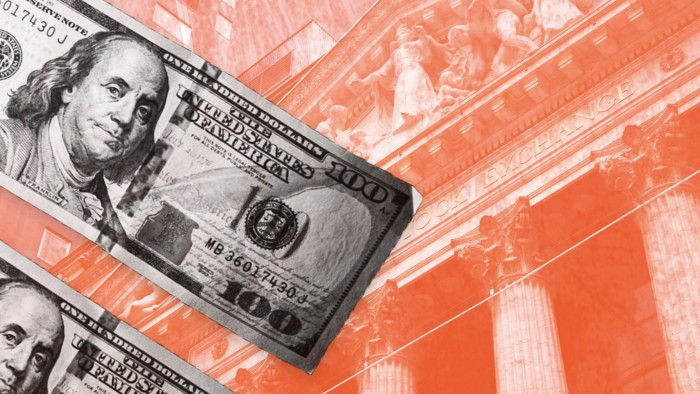40% of converted ETFs have suffered net outflows

Simply sign up to the Exchange traded funds myFT Digest -- delivered directly to your inbox.
Latest news on ETFs
Visit our ETF Hub to find out more and to explore our in-depth data and comparison tools
Dozens of shops have converted mutual funds to ETFs, but not all conversions have attracted sales, data shows.
Some 37 actively managed mutual funds have been converted to ETFs since early 2021, according to data from Morningstar Direct. Those funds have recorded a combined $10.5bn in net inflows since they became ETFs, the database shows, but most of those new assets went into four ETFs sponsored by Dimensional Fund Advisors.
Some 40 per cent of the converted ETFs have recorded net outflows since their wrapper changes, according Morningstar.
In March 2021, Guinness Atkinson was the first shop to receive regulatory approval to convert two mutual funds to ETFs. The then-$25mn Guinness Atkinson Dividend Builder and $4.4mn Guinness Atkinson Asia Pacific Dividend Builder funds were refashioned as the SmartETFs Dividend Builder and SmartETFs Asia Pacific Dividend Builder ETFs.
Investors had piled a combined $2mn into the pair of funds in the six months before they became ETFs, according to data from Morningstar Direct. However, the funds have suffered net outflows since then. They bled $1mn between the day they converted and January 20.
Guinness Atkinson did not respond to requests for comment.
Three months later, Dimensional Fund Advisors converted four mutual funds into ETFs. At the time, the funds had a combined $25bn in assets. The DFA Tax Managed US Equity, DFA Tax Advantaged US Core Equity 2, DFA Tax Managed US Small Cap and DFA Tax-Managed US Targeted Value funds leaked a combined $799mn during the six months before their conversions were announced, according to Morningstar.
However, they went on to generate a combined $8.6bn in net inflows between their June 2021 conversions and January 20, Morningstar data shows.
Since then, the Texas-based firm has also remade three other mutual funds into ETFs, Morningstar data shows. Investors have piled $3.2bn into the other three ETFs, which transitioned into the new wrapper in September 2021 and May 2022, respectively.
Dimensional declined to comment.
“The seven mutual funds [Dimensional has] converted were all tax-managed mutual funds to begin with, so going to the ETF wrapper was something that made a lot of sense for them from a tax perspective,” said Daniel Sotiroff, senior manager research analyst for Morningstar.
But having a recognisable brand name does not guarantee inflows, data also shows.
JPMorgan, for example, converted its first mutual fund to an ETF in April. The Inflation Managed Bond Fund, which had $1.1bn in assets on the date of the conversion, became the JPMorgan Inflation Managed Bond ETF. The fund bled $243mn in the six months before the firm announced the change. It shed an additional $95mn in the half-year after it was turned to an ETF. Overall, investors pulled $226mn from the ETF from its April 11 conversion date through January 20, according to Morningstar.
In all, the New York-based firm has given ETF makeovers to four mutual funds. It plans to convert another four mutual funds this year.
JPMorgan’s four converted ETFs have leaked a combined $1.2bn since they converted, according to Morningstar data. None of JPMorgan’s converted ETFs have recorded net inflows from the date of their conversions through January 20.
“We look at the benefits of the ETF wrapper, such as trading throughout the day, transparency and tax efficiency, combined with the converted strategy, to make sure it makes sense for investors,” said Bryon Lake, global head of ETF solutions for JPMorgan Asset Management. “Second, the fact that the converted strategy has assets and a track record is a benefit for clients, as it helps them make investment decisions. We have great investors with excellent track records and converting them to an ETF shines a light on those capabilities.”
ETF conversions were long-term strategic decisions and JPMorgan believed that demand for ETFs would continue to increase, Lake noted.
Industry-wide, active US ETFs added $87.9bn in net inflows last year, according to Morningstar Direct. They ended the year with $343.7bn in assets, up 16 per cent from a year earlier. They represented just 5 per cent of the $6.5tn in US ETF assets as of December 31, the database shows.
By comparison, active US mutual funds shed more than $1tn last year, according to Morningstar data. In all, such mutual funds had $11.6tn in assets as of December 31.
“I think ETFs are just really hyper competitive right now,” Sotiroff said. “There’s almost a strategy for just about everything out there and it’s really, really challenging to differentiate yourself.”
*Ignites is a news service published by FT Specialist for professionals working in the asset management industry. It covers everything from new product launches to regulations and industry trends. Trials and subscriptions are available at ignites.com

Click here to visit the ETF Hub

Comments